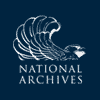Brigadier General William Heath to George Washington, 8 January 1776
From Brigadier General William Heath
Camp at Cambridge [Mass.]
Janry 8th 1776
May it please your Excellency,
Several Officers in the List now Exhibited, are not in the List of Officers in the Brigade Under my Command; heretofore presented to your Excellency, But have been mentioned to you, before they were Inserted in the above List.1 I am with the greatest respect your Excellency’s most Humble Servt
W. Heath
ALS, DNA: RG 93, Revolutionary War Rolls, 1775-83. Heath’s letter appears at the bottom of a return of officers in Col. John Paterson’s 15th Continental Regiment (see n.1 below). No reply to Heath from GW has been found.
1. Heath appended an undated “Return of Officers in the 15th Regiment of Foot Commanded” by Paterson. The return listed three field officers, seven captains, fourteen lieutenants, seven ensigns (along with an eighth man recommended for the commission), and five staff officers. Paterson, Lt. Col. Seth Read, and Maj. Henry Sherburne are named as the field officers. Among the captains listed were David Noble and Thomas Theodore Bliss. The regiment’s fourteen lieutenants included first lieutenants John Bacon, John Cumpston, and Thomas McKinstry; and second lieutenants Edward Cumpston and Peter White. In addition to these fourteen men, the return listed two lieutenants whose names were struck out. Samuel Stevens and John Arnold counted among the regiment’s ensigns. The return also gave the names of the regiment’s chaplain, adjutant, quartermaster, surgeon, and surgeon’s mate. A note on the return, which is in GW’s writing, reads: “John Cumpston with [Benedict] Arnolds Detacht.”
The return contained a section, headed “Recommended,” which provided the names of the following four men who were proposed for commissions: William Walker as 1st lieutenant; Ens. Jeremiah Miller as second lieutenant; and Solomon Martin and Job Priest as ensigns. A statement on the document indicates that Martin would replace Ens. Ephraim Hollister, who had resigned. Finally, Moses Ashley was recommended to replace Capt. Thomas Williams, who also had resigned. A note addressed to Heath, which appears below the return, and is signed by Paterson and dated at “Charlestown” on 6 Jan. 1776, reads: “The abovementioned Gentlemen I recommend to your Honor for Commissions.”
The list of officers that Heath previously had submitted to GW has not been found.
January 1776 marked the transition from the old army to a new one. The new army now had standard, identically organized regiments. As a result, on 1 Jan. 1776, GW ordered regiment commanders to provide lists of commissioned officers as well as the names of officers recommended to fill vacancies (see General Orders, that date, and n.1). In his general orders for 2 Jan., GW described the new regimental structure and directed the compilation of weekly returns (see also General Orders, 3 and 5 Jan. 1776). Thus, Heath may have provided the enclosed return in order to comply with GW’s orders. GW also corresponded with other brigadiers general about regimental returns and army strength (see, for instance, GW to John Sullivan, 10 Jan. 1776).

![University of Virginia Press [link will open in a new window] University of Virginia Press](/lib/media/rotunda-white-on-blue.png)
